
Persia and Alexander The Great Persian empire map, Persian empire
The inhabitants of Persis were considered to be the rulers of the Achaemenian Empire and were exempt from taxation. As the homeland of the Achaemenian dynasty, Persis was closely associated with the monarchy. Cyrus built his capital at Pasargadae, and about 30 miles (48 km) to the southwest Darius I founded his new capital of Parsa, known to.
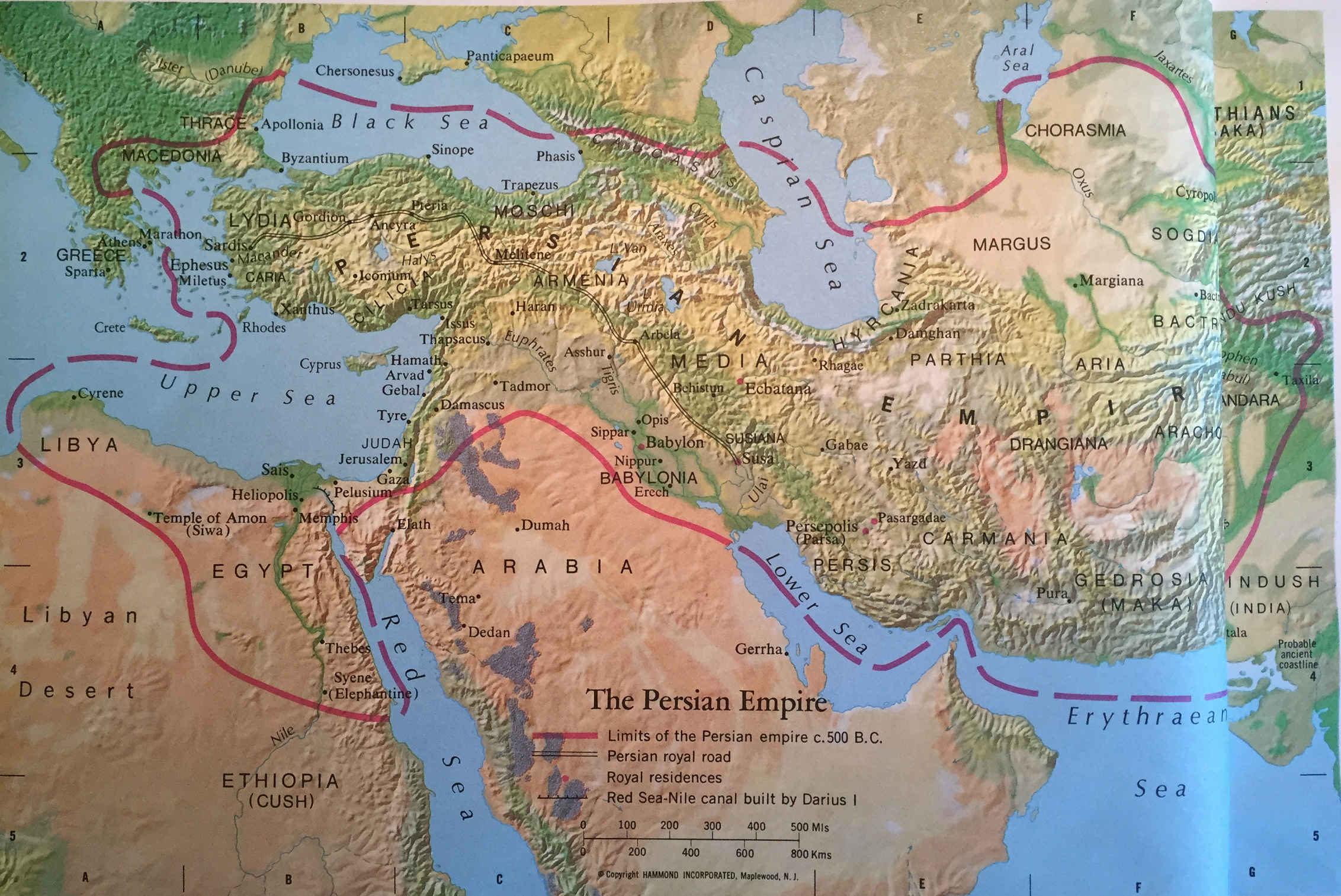
Biblical Map The Persian Empire World Events and the Bible
The Teutonic Order's last grand master in Prussia, Albert of Hohenzollern, became a Lutheran and, in 1525, secularized his fief, which he transformed into a duchy for himself. Thereafter until 1701 this territory (i.e., East Prussia) was known as Ducal Prussia.When Albert's son and successor, Albert Frederick, died sonless in 1618, the duchy passed to his eldest daughter's husband, the.

Ancient World History Ancient Persians
Discover the geography and extent of the Persian Empire with a map. Updated: 11/21/2023 Table of Contents The Persian Empire Persian Empire Map Persian Empire Timeline Persian.

ancient persian map Google Search History/ancient history Pinterest
This map reveals the expansion of the Persian Empire from Cyrus the Great to Darius I, 550-486 BC. The Persian Achaemenid Empire was actually the last great empire of the ancient Near East.

persian empire map Google Search Maps of Our World Pinterest
This map reveals the Persian Empire in 580 BC under its greatest ruler Darius I. The Persian Empire was founded by Cyrus in 536 BC., after they succeeded the Babylonian Empire. The first king of the Persian Empire was Cyrus, who issued the famous decree for the Jews to return to their homeland to rebuild their Temple.

The Iranian dream of a reborn Persian Empire
A map illustrating the rise and evolution of the Achaemenid Persian Empire (from the name of Achaemenes, an ancestor of the empire 's founder, Cyrus the Great) from its origins in around 550 BCE when Cyrus II of Persia conquered the Medes until its height during the reign of another Great - Darius I when, in c. 500 BCE, it brought under a single.

Reddit Dive into anything
The Assyrian Empire's fall in the middle of the sixth century B.C.E. provided the Persian people with the opportunity to subdue other empires swiftly. They overcame the Medes, Lydians, Neo-Babylonians, and Egyptians in less than a century. Around 50 million people lived in the Persian Empire at its height in 500 BCE.
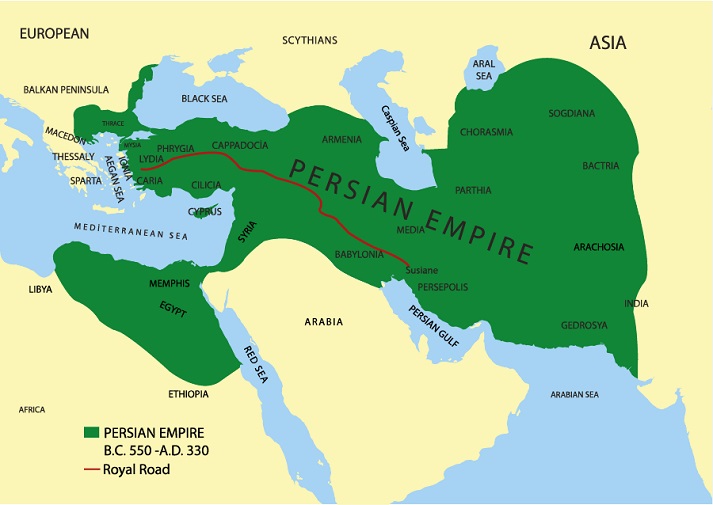
The Persian Empire Educational Resources K12 Learning, World, History
Family tree of the Achaemenid rulers. The Persian nation contains a number of tribes as listed here.. : the Pasargadae, Maraphii, and Maspii, upon which all the other tribes are dependent. Of these, the Pasargadae are the most distinguished; they contain the clan of the Achaemenids from which spring the Perseid kings.
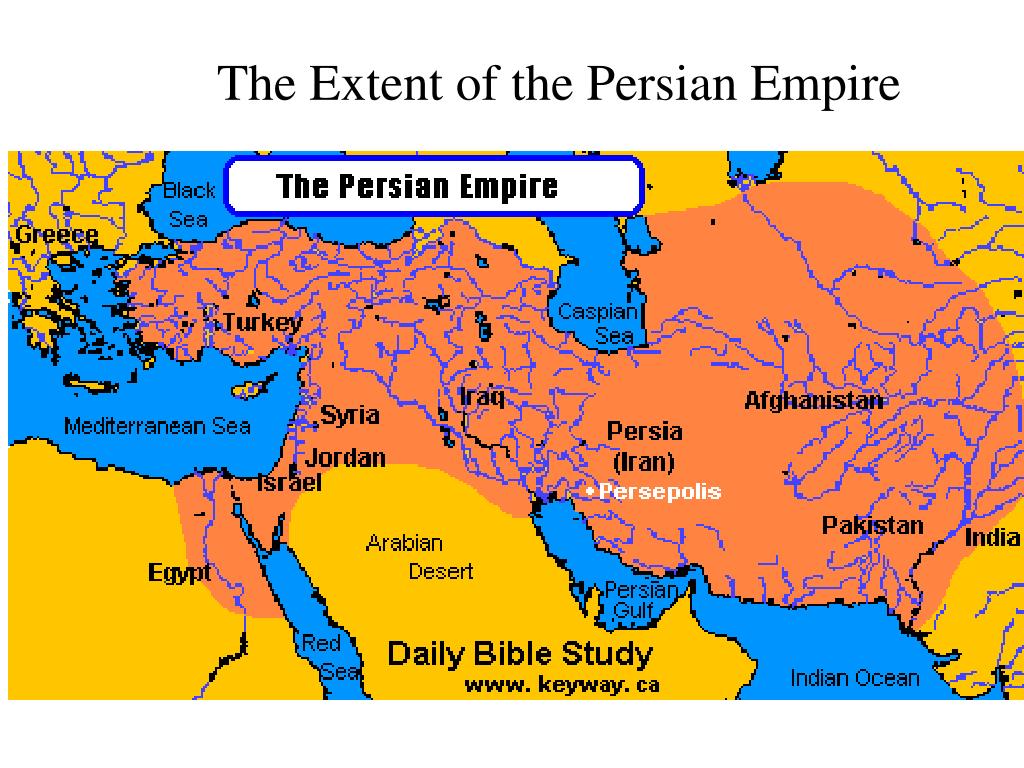
PPT The Persian Empire PowerPoint Presentation, free download ID
Map of A map of the Persian Empire at the time of Darius I (549-486 BC) and the Ionian Revolt (499-493 BC) between the Greeks and the Persians. The map is color-coded to show the Greek coastal settlements, and the Persian Empire extending from Anatolia to the Indus River in the east and Egypt to the south. The map shows the Persian Royal Road from Susa near the Persian Gulf to Sardis.

Iran's cultural heritage reflects the grandeur and beauty of the golden
The Persian Empire (about 500 BC) At its greatest extent, the empire included the modern territories of Iran, Turkey, Iraq, Kuwait, Syria, Jordan, Israel, Palestine, Lebanon, all significant population centers of ancient Egypt as far west as Libya, Trace-Macedonia and Bulgaria, much of the Black Sea coastal regions, all of Abkhazia, Armenia, Georgia, Azerbaijan, and parts of the North Caucasus.
FilePersian Empire ua.PNG Wikimedia Commons
View map of the Persian empire in the atlas. This empire is sometimes known as the "Achaemenid empire" (after the dynasty which ruled it), to differentiate it from the other Persian or Iranian empires which flourished at different times (for example the Sasanian empire of c.240-640 CE and the Safavid empire of the 16th to 18th centuries).
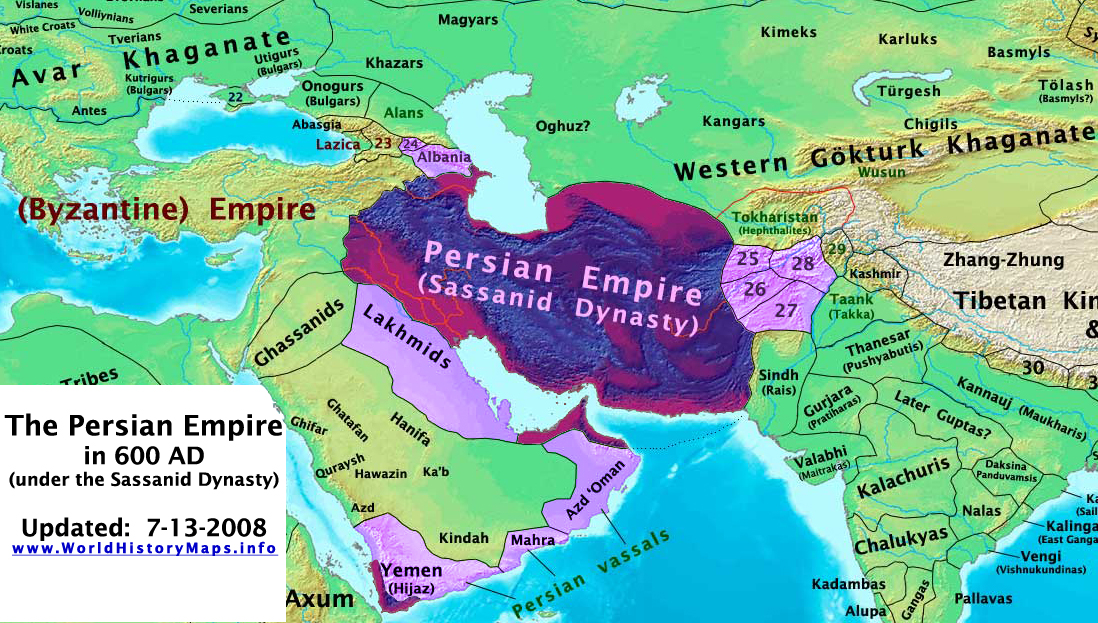
Sassanid Persians Dynasty World History Maps
About 2,300 years ago, the Persian Empire covered over two million square miles and held nearly half the world's population. Whatever Alexander tells you, this was the world's first great empire. The article below uses "Three Close Reads". If you want to learn more about this strategy, click here. First read: preview and skimming for gist
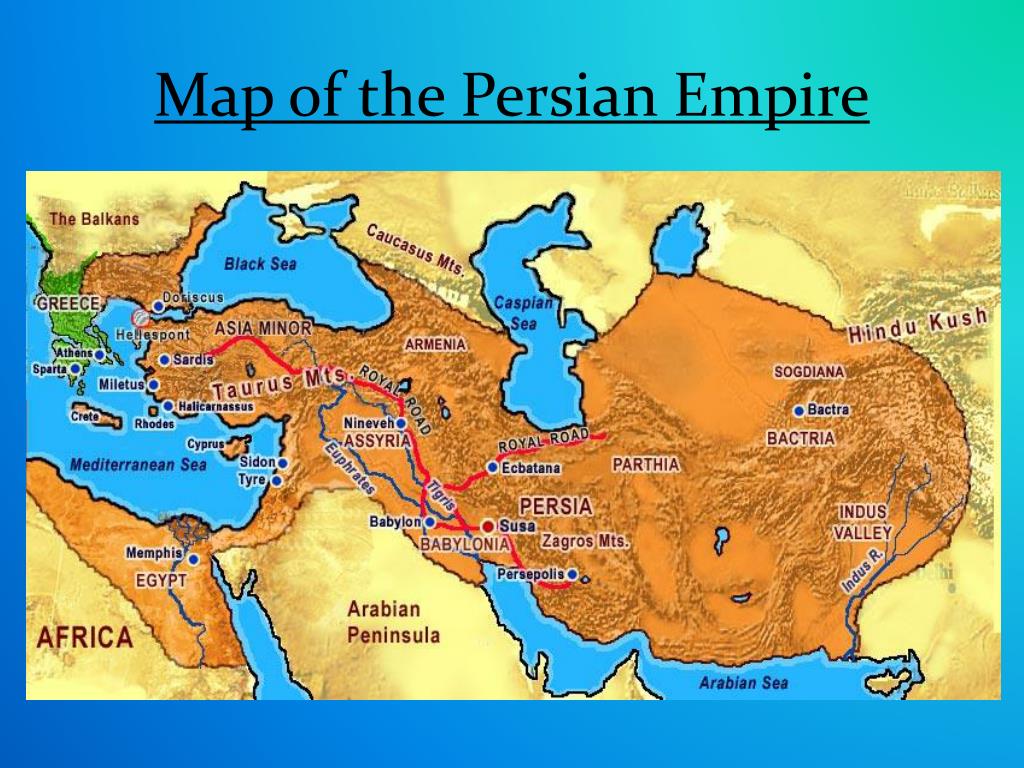
PPT The Persian Empire c. 550 330 BCE PowerPoint Presentation, free
Map of the Persian Achaemenid Empire at its greatest extent under the reigns of Darius the Great and Xerxes. Inspired by Historical Atlas of Georges Duby (p.11, map D), this map was made by Fabienkhan the 24th of August 2006, using Inkscape and GIMP. Arad translated the map to help. Remove Ads Advertisement License & Copyright

A map of the Achaemenid/Persian empire at its greatest extent, during
Persia, historic region of southwestern Asia associated with the area that is now modern Iran. The term Persia was used for centuries and originated from a region of southern Iran formerly known as Persis, alternatively as Pārs or Parsa, modern Fārs.
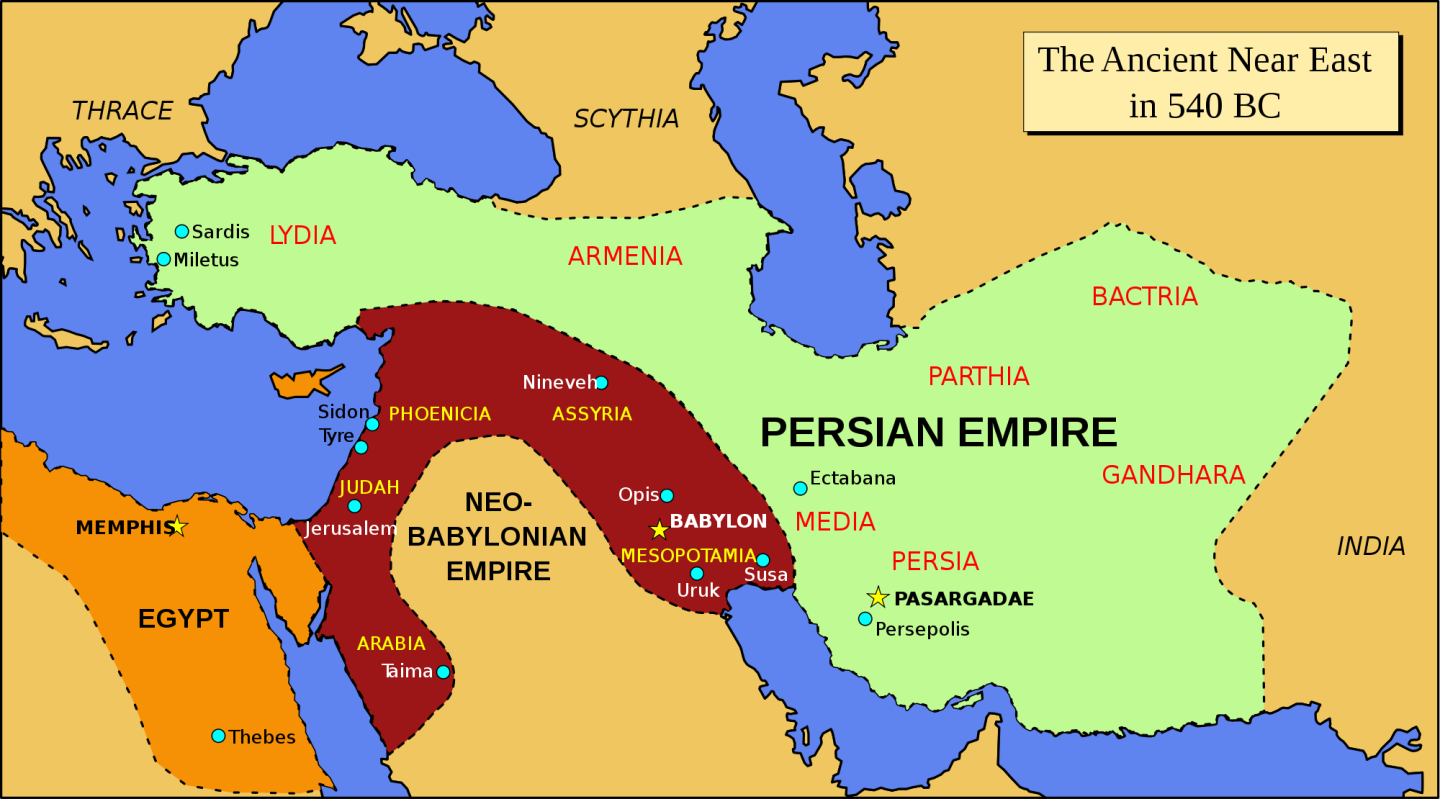
The great empire of Persia on emaze
The empires of ancient Persia were the Achaemenid Empire (c. 550-330 BCE), the Parthian Empire (247 BCE-224 CE), and the Sassanian Empire (224-651 CE). Between the Achaemenid and Parthian empire was the reign of Alexander the Great and the Hellenistic Seleucid Empire (312-63 BCE).

an old map shows the persian empire
Map entitled 'Persian Empire in the Time of Darius and Xerxes,' shows territories in Asia and the Middle East during the 330s.